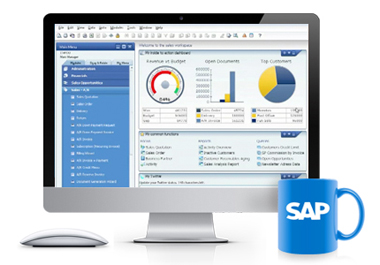Business Owners Must Accurately Measure Enterprise Cash Flow
Cash flow happens when money moves in or out of your enterprise over a period of time. Business leaders pay close attention to cash flow measurements to get a better understanding of their company’s financial situation and overall value. Using parameters set by cash flow data, you can figure out the return on investment (ROI) of a project and determine its worth before actually setting a plan in motion.
Cash flow can also help a business owner identify problems with the enterprise’s liquidity, or the ability to turn assets into cash and pay outstanding bills. Liquidity and profitability measure two different things, so it’s important to be able to use cash flow to keep track of both.
Finally, cash flow can be an indispensable metric of income quality and risk assessment. It is absolutely vital that small and mid-sized business (SMB) owners have a way to quickly and accurately measure cash flow across the enterprise.
Picture Cash Flow Perfectly with Integrated ERP
Every part of a growing business needs a steady stream of money to operate successfully and efficiently. Because a business can generally be split into many different departments, such as accounting, customer service, sales, inventory, etc., there can be a large number of cash streams flowing throughout the organization. Business owners must stay tuned to each and every one of those streams to fully understand the financial situation of the entire company.
If you don’t have a good picture of enterprise-wide cash flow, you will most likely have trouble making critical decisions related to financial growth and profitability. Furthermore, if you cannot evaluate the worth of your assets and other non-cash items, it will be very difficult to fully understand the liquidity of your company. Without solid comprehension of the various financial metrics crucial to running a business, your company runs the risk of losing money every single day.
Fortunately, there is one easy solution to the cash flow management problem. Many SMB leaders utilize powerful financial accounting software to help them accurately track cash flow, profits, and liquidity throughout the enterprise. Ideally, that accounting software would be a part of a larger business system known as enterprise resource planning (ERP) software. ERP includes applications for comprehensive management of business processes and data across an enterprise, combining every single individual department on the same simple system for higher efficiency and better communications.
Integrated Data for Better Financial Insights
There are many benefits of having all of your critical enterprise applications on the same high-performance platform. For one thing, when all of your data is stored in a central location, it is much easier for both the software and your employees to access it quickly. Centralized and integrated data allows your ERP’s analytics to generate incredible business insights in real time–including up to the minute information on enterprise-wide cash flow. Business owners can utilize these essential insights to confidently make smarter, faster decisions and truly understand the financial status of the organization at any time.
SAP Business One is one of the fastest-selling ERP systems designed specifically for small and mid-sized enterprises (SMEs). SAP Business One provides a simple and powerful way to track cash flow across an organization and utilize accounting data to improve visibility into the financial status of the business. It is an all-in-one solution for wholesale distributors, manufacturers, and retailers who want to fully understand their enterprise’s finances, profits, non-cash assets, and more, on top of completing critical day-to-day operations more efficiently than ever before.
If you want to see what SAP Business One can do for your business, connect with Cornerstone Consulting today. Our highly-experienced and passionate ERP consultants are standing by to help you discover the ultimate SAP Business One ERP configuration for the specific needs and goals of your growing business.


